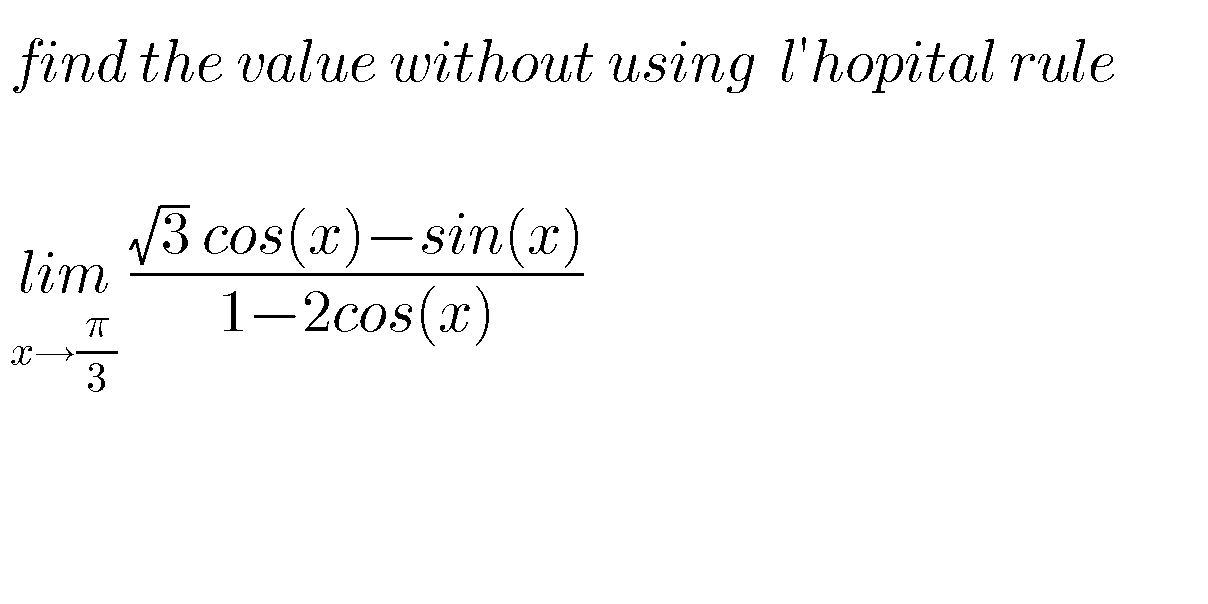
AllQuestion and Answers: Page 1398
Question Number 73012 Answers: 4 Comments: 0
Question Number 72912 Answers: 1 Comments: 0
Question Number 72908 Answers: 2 Comments: 15
Question Number 72900 Answers: 1 Comments: 0
Question Number 72888 Answers: 1 Comments: 5
Question Number 72886 Answers: 1 Comments: 0
Question Number 72884 Answers: 0 Comments: 1
Question Number 72883 Answers: 1 Comments: 0
Question Number 72889 Answers: 1 Comments: 1
Question Number 72880 Answers: 0 Comments: 0

Question Number 72877 Answers: 0 Comments: 1
Question Number 72871 Answers: 1 Comments: 0

Question Number 72863 Answers: 0 Comments: 1

Question Number 72905 Answers: 2 Comments: 3
Question Number 72894 Answers: 1 Comments: 0

Question Number 72841 Answers: 1 Comments: 3
Question Number 72838 Answers: 0 Comments: 1
Question Number 72837 Answers: 0 Comments: 1
Question Number 72836 Answers: 1 Comments: 1

Question Number 72835 Answers: 1 Comments: 0
Question Number 72832 Answers: 1 Comments: 1
Question Number 72824 Answers: 1 Comments: 0
Question Number 72823 Answers: 1 Comments: 0
Question Number 72934 Answers: 1 Comments: 0

Question Number 72813 Answers: 0 Comments: 3
Question Number 72806 Answers: 1 Comments: 2
Pg 1393 Pg 1394 Pg 1395 Pg 1396 Pg 1397 Pg 1398 Pg 1399 Pg 1400 Pg 1401 Pg 1402
